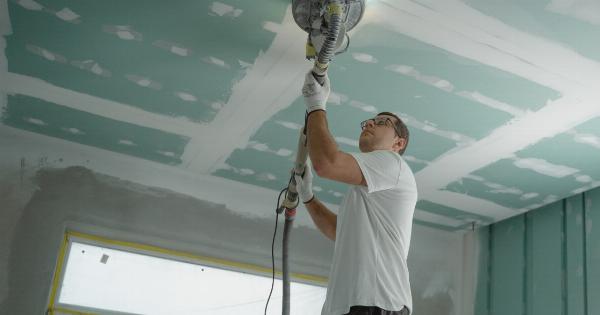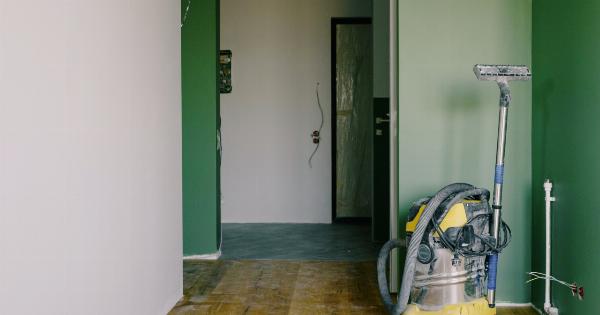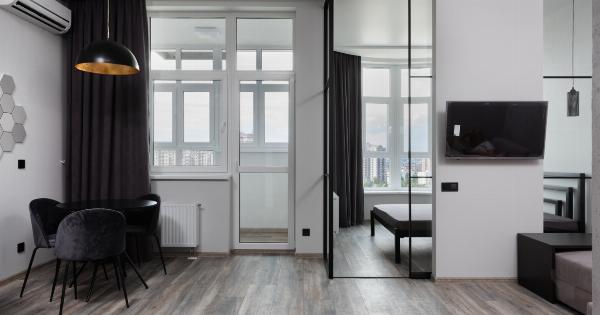In today’s world, where environmental concerns and sustainability are gaining increasing importance, it is crucial to look beyond just outdoor air pollution and focus on improving the quality of indoor air as well.
We spend most of our time indoors, be it at our homes, offices, or other enclosed spaces. Therefore, the impact of indoor air quality (IAQ) on our health, productivity, and overall well-being cannot be underestimated.
The Link Between Indoor Air Quality and Health
Poor indoor air quality can have severe health consequences. It can lead to various respiratory issues such as allergies, asthma, and other chronic diseases.
Indoor air pollution often contains harmful substances like tobacco smoke, volatile organic compounds (VOCs), mold, and allergens. These pollutants can irritate our airways, trigger allergies, and compromise our immune system, making us more susceptible to illnesses.
On the other hand, good indoor air quality can significantly improve our health. Proper ventilation, regular air purification, and use of sustainable materials can help reduce exposure to harmful substances and prevent health issues.
Clean indoor air promotes better respiratory health, reduces the risk of respiratory diseases, and improves overall well-being.
Enhancing Productivity and Performance
Indoor air quality not only affects our health but also has a direct impact on our productivity and performance. Poor IAQ can lead to discomfort, tiredness, and lack of concentration.
Contaminants in the air can cause headaches, dizziness, and irritability, making it challenging to focus on tasks and perform efficiently.
On the contrary, good indoor air quality creates a conducive environment for better productivity. Fresh and clean air improves cognitive function, enables better concentration, and enhances overall performance.
Employees in offices with good IAQ experience fewer sick days and increased job satisfaction, resulting in higher productivity and economic benefits.
The Role of Ventilation and Air Purification
Ventilation is a vital aspect of achieving good indoor air quality. It helps remove stale and polluted air, replenishing it with fresh outdoor air.
Proper ventilation systems ensure a sufficient exchange of indoor and outdoor air, reducing the concentration of pollutants inside the building.
Air purification techniques, such as using air purifiers or filters, work in conjunction with ventilation systems by further eliminating harmful pollutants.
These technologies remove particulate matter, allergens, and VOCs from the air, improving its overall quality and making it healthier to breathe. It is essential to use energy-efficient air purification systems that do not consume excessive energy or contribute to greenhouse gas emissions.
Identifying and Reducing Indoor Air Pollutants
To ensure good indoor air quality, it is crucial to identify and minimize indoor air pollutants.
Regular maintenance and cleaning of HVAC systems, proper disposal of chemicals, and avoiding smoking indoors are some essential steps in reducing indoor air pollution. Additionally, using sustainable materials and furnishings that do not off-gas harmful substances can significantly improve IAQ.
Monitoring IAQ through air quality sensors and taking appropriate actions when pollutant levels are high is also imperative.
These sensors can detect various pollutants and trigger ventilation or air purification systems accordingly, maintaining an optimal indoor environment.
The Importance of Energy Efficiency
When considering indoor air quality in the context of a sustainable future, energy efficiency is a crucial factor. High energy consumption not only increases costs but also contributes to environmental degradation and climate change.
Therefore, it is essential to adopt energy-efficient practices in ensuring good IAQ.
Efficient ventilation systems with heat recovery capabilities can help reduce energy losses while maintaining a constant supply of fresh air.
Using smart systems that adjust ventilation rates based on occupancy and air quality parameters can further optimize energy use. Similarly, selecting eco-friendly air purifiers that minimize energy consumption without compromising effectiveness is essential for a sustainable future.
Promoting Sustainable Materials and Practices
In the pursuit of good indoor air quality, it is vital to promote the use of sustainable materials and practices.
Many building materials and furnishings contain harmful chemicals that can off-gas volatile organic compounds, contributing to indoor air pollution. Opting for low VOC or VOC-free materials can help create healthier indoor environments.
Furthermore, promoting sustainable building practices, such as proper insulation, natural ventilation, and the use of renewable energy sources, can contribute to both indoor and outdoor air quality.
Sustainable building certifications, like LEED (Leadership in Energy and Environmental Design), prioritize indoor air quality and encourage the use of sustainable materials and practices.
Education and Awareness
Lastly, creating awareness and educating people about the importance of indoor air quality is essential for achieving a sustainable future. Many individuals are unaware of the potential health hazards associated with poor IAQ.
By disseminating information through various channels, such as public campaigns, educational programs, and workplace initiatives, we can empower individuals to take action and make informed choices concerning indoor air quality.
Ultimately, improving indoor air quality is not just a matter of personal health but also a significant step towards building a sustainable future.
By prioritizing IAQ, we can ensure better health outcomes, enhanced productivity, reduced environmental impact, and improved overall well-being. It is up to individuals, policymakers, and businesses to collectively work towards creating healthier indoor environments that contribute to a sustainable and brighter future.





























